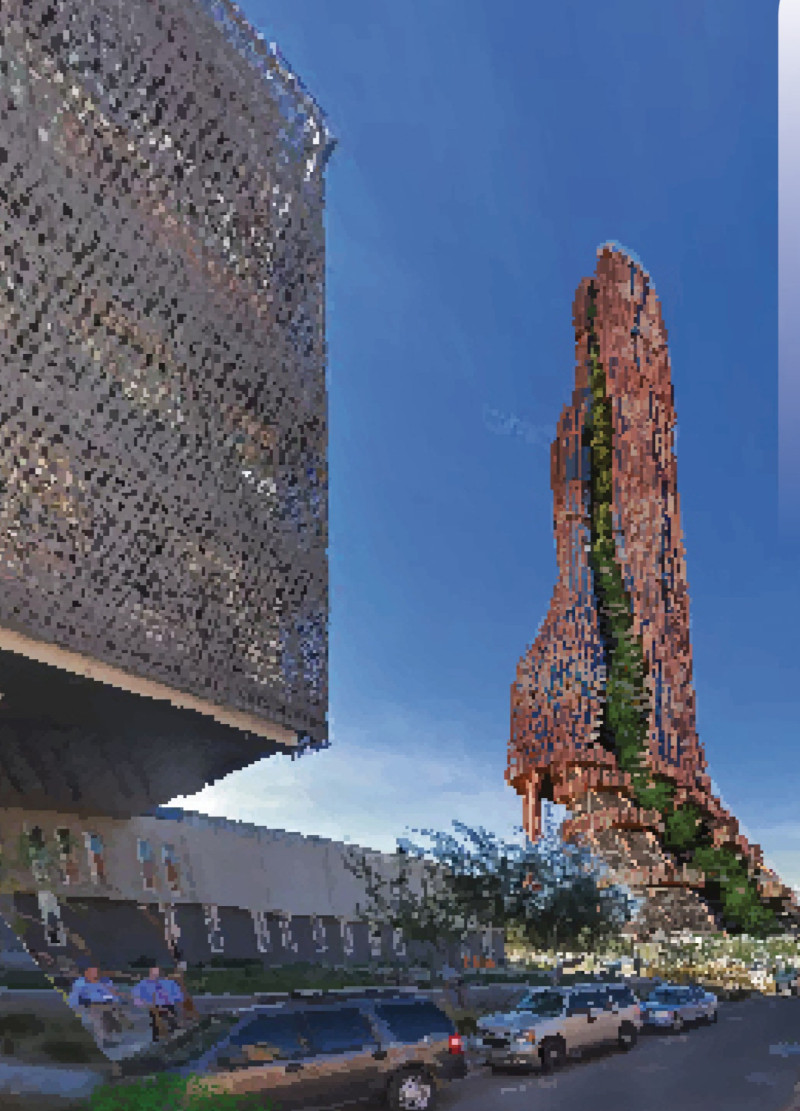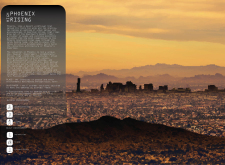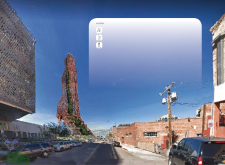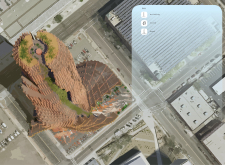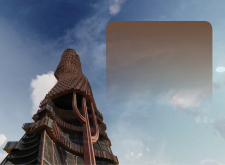5 key facts about this project
The design of "High Phoenix Rising" stems from a desire to create a unique identity within Phoenix. Its architectural form is characterized by a tall, slender silhouette, which both optimizes land use and contributes to the city’s skyline. The building stands as a symbol of resilience, reflecting the characteristics of the local landscape while introducing contemporary design methodologies.
The project is notable for its distinctive integration of vertical greenery, which enhances the building's ecological footprint. The use of materials such as glass, concrete, and natural stone allows for both aesthetic appeal and structural integrity. The extensive use of glass facilitates transparency, offering views that connect users with the immediate environment. The inclusion of living green walls serves a dual purpose: promoting biodiversity while contributing to the building's energy efficiency.
Another unique aspect of "High Phoenix Rising" is its focus on sustainable design practices. The project incorporates strategies to mitigate the desert climate, such as utilizing shaded areas and natural ventilation systems. These elements work together to enhance occupant comfort while reducing the reliance on artificial cooling.
Community accessibility is woven into the design, emphasizing public gathering spaces that encourage interaction. The architectural layout incorporates plazas and open areas, allowing for various events and activities that serve the local populace. This interaction reinforces the project’s role as a civic monument, fostering a sense of community.
With its innovative design and commitment to sustainability, "High Phoenix Rising" stands apart in an era where many developments conform to standardized forms. It offers a model for future projects within arid urban contexts, promoting harmony between architecture and environment.
To gain deeper insights into the architectural plans, sections, and overall designs of this project, readers are encouraged to explore the presentation materials available for "High Phoenix Rising." Detailed architectural ideas illustrated within these documents will provide a comprehensive understanding of the project’s execution and vision.


